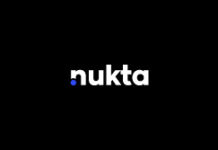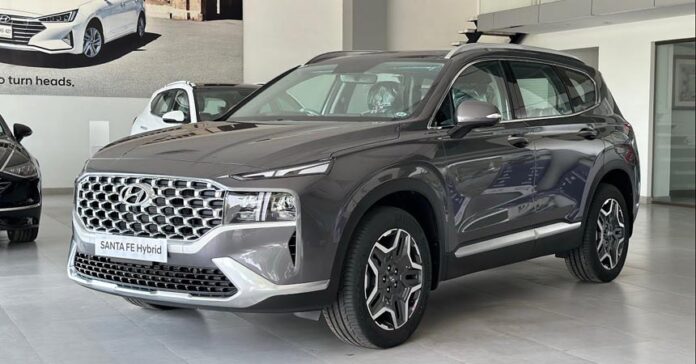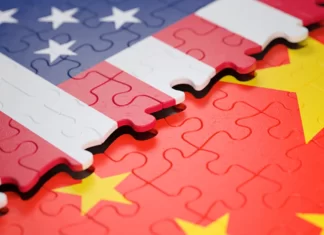Pakistan’s federal budget 2025-2026 has created a conflict. The government’s slightly expected decision to relay a new tax on consumers in the automotive sector through The New Energy Vehicle adoption levy has reignited the flames of war between the four companies currently vying for power in its locally manufactured SUV market.
The NEV Levy, which imposes a tax of up to 3% on petrol and diesel vehicles to push the market towards greener alternatives for daily transport although this does not seem obvious considering hybrid vehicles are also being taxed. Has had an impact on both car prices and this price war.
As the heat rose some companies chose to stay still and take the hit. Some chose to hit the consumer(It’s KIA if you hadn’t guessed) and some chose to take a different route entirely.
Kia moves first—with a list of reasons
Kia Lucky Motors was one of the first to fire a shot. The company quite obviously and as we have come to expect from lucky motors, increased prices stating three key factors behind its sweeping price hikes: the NEV Levy, rising international freight costs, and the ongoing depreciation of the Pakistani Rupee. The fourth factor is one we consumers are familiar with and one Lucky Motors doesn’t have to mention is very obviously a desire for increased revenue. As a result, nearly every major model in its portfolio saw a jump.
The Picanto AT was bumped up by Rs. 150,000. The Stonic EX+ rose by Rs. 499,000. But more importantly the popular Sportage lineup was hit particularly hard: the Alpha increased to Rs. 8.899 million (up Rs. 400,000), the FWD variant rose to Rs. 10.499 million (up Rs. 500,000), and the hybrid Sportage climbed Rs. 600,000 to Rs. 11.599 million. The larger Sorento variants saw even steeper increases, with the Sorento HEV AWD crossing Rs. 17 million. Kia’s Carnival also jumped Rs. 700,000, now priced at Rs. 18.2 million. Only its EV5 models remained untouched, likely exempt due to their all-electric status, odd however considering that freight costs and the rupee devaluation probably affects electric vehicles as well.
Hyundai follows—then switches gears
Hyundai Nishat also shot up its prices, laying blame solely at the feet of the NEV Levy. The Tucson Hybrid Smart now sells for Rs. 11.22 million (up by Rs. 221,000), while the Signature version has gone up by Rs. 241,000 to Rs. 12.24 million. The Santa Fe lineup was also affected, with the Smart variant increasing by Rs. 260,000 and the Signature variant by Rs. 294,000. While not as dramatic as KIAs price hike it was a considerably questionable decision on Hyundai’s part.
That was until just a few days after the price adjustment, Hyundai took a surprising U-turn: it slashed the prices of both Santa Fe variants under a limited time promotional offer. Until July 31, the Santa Fe Smart FWD will be available at Rs. 12.85 million (down Rs. 400,000), and the Santa Fe Signature AWD at Rs. 14.295 million (a Rs. 700,000 cut from its post-tax price).
The move seems to be Hyundai’s attempt to first counterbalance the price hikes caused by the NEV Levy. And second it may be trying to leverage its lower rates to counter the fact that the Santa Fe sold in Pakistan is a generation older than the one available in the global market. Considering the fact that KIA recently updated its Sportage and Haval offered free facelifts for its H6, Hyundai may be trying to attract customers to its larger hybrid SUV offering by lowering prices and offering a value to money vehicle. Similarly it may be the case that in the case of the Tucson Hyundai may not have the space to undercut especially considering it has only recently engaged in a price war with KIA.
MG absorbs the hit—quietly
MG Pakistan, although no longer carrying the swagger pomp or even the respect it had when it first entered the SUV market, has also made an important statement by not adjusting prices upward. After ending its early bird offer on the MG HS Trophy, the SUV reverted to its original post-launch price of Rs. 8.399 million. Despite the NEV Levy, MG did not raise the price further. The company appears to have absorbed the cost internally, a move that subtly positions MG as consumer-friendly without overt fanfare.
This mirrors a similar approach by Sazgar Engineering, which makes Haval SUVs locally.
Haval’s stillness remains its strength
Sazgar, unlike most of its rivals, has so far resisted the urge to adjust prices at all even after the NEV Levy. The H6 1.5T remains priced at just under Rs. 9.1 million, the 2.0T holds at Rs. 10.5 million, and the H6 HEV is unchanged at Rs. 11.7 million. When Haval launched the facelifted H6 earlier this year complete with a new 14.6-inch touchscreen, revised grille, and more refined hybrid technology it also made no price adjustment, earning it praise for offering more while asking for the same. Read more on this in a report we’ve done previously.Market share over margins; Sazgar holds off on price hike as competitors pass on additional tax.
But analysts are quick to point out: this isn’t benevolence, it’s positioning.
With the latest Tucson already launched at competitive prices, and Kia responding aggressively with the new Sportage, Haval risked being priced out of relevance had it passed costs to buyers. Its hybrid and 2.0T variants were already perceived as expensive before the NEV Levy. Holding prices was, in many ways, the only way to retain market value without damaging resale expectations or brand credibility.
And the gamble paid off. After the H6 facelift, Sazgar’s four-wheeler sales shot up by 67% in May (919 units), followed by another 47% spike in June, crossing 1,300 units—an all-time high for the brand.
The problem for Haval is that its not just competing in terms of tech pricing, branding after sales service or brand reputation Haval also has to worry about being Chinese. While acceptability for Chinese vehicles has grown especially since a J-10C shot down a Rafale bolstering our trust in Chinese engineering at the back of their minds consumers still carry the concern regarding the quality of China sourced vehicles. So both Haval and Sazgar know that there is a force multiplier to adjusting prices upwards or downwards considering their home in mainland China.
The war isn’t over—it’s just heating up
Each brand has chosen its own path. Kia framed its hikes as unavoidable and driven by macroeconomic pressure(classic KIA). Hyundai blamed nothing but the tax, then offered a partial reprieve through a Santa Fe discount. MG and Haval, for now, are banking on consumer goodwill by absorbing the blow. But how long they can maintain this strategy is anyone’s guess. It seems its a battle between the Koreans and the Chinese,to staying still vs possibly over reacting.
What’s clear is this: in a segment as tight and price-sensitive as Pakistan’s SUV market, holding firm might be the boldest play of all at least in the short term. But with rising costs, currency instability, and an increasingly ecoconscious policy landscape, none of these brands can afford to blink for long.
























